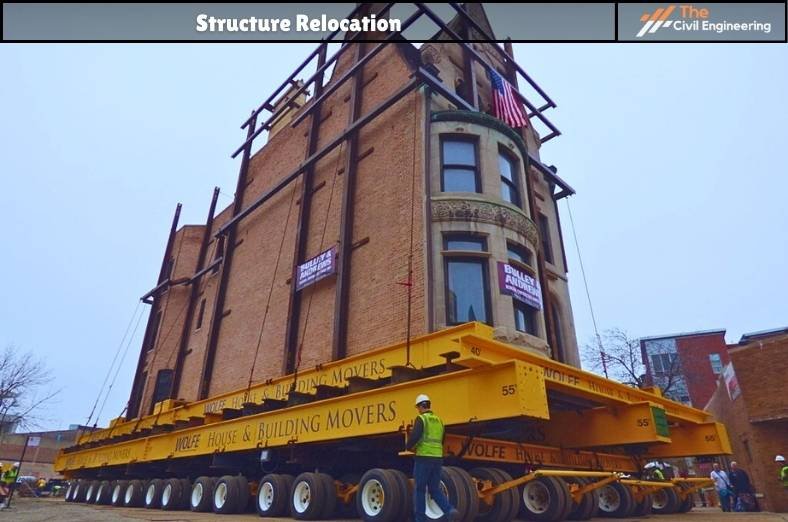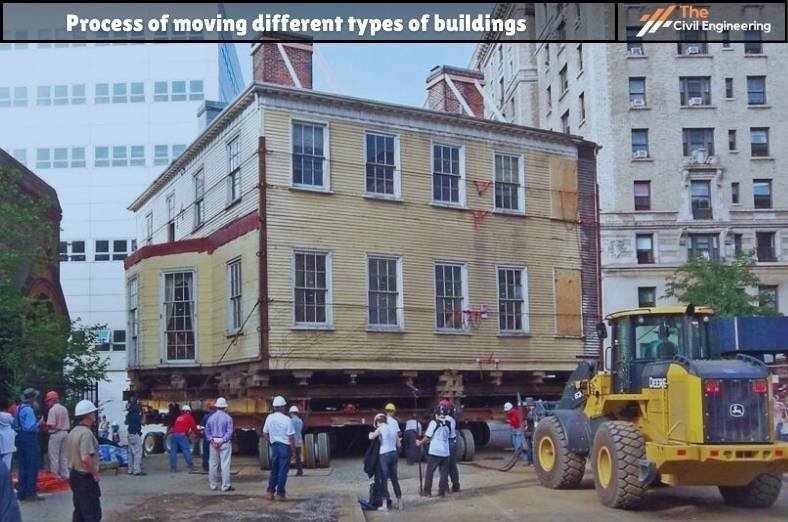1. Introduction
Structure relocation may be defined as the process of moving a structure from one place to another.
There may be several reasons behind the moving of structure from one location to another such as the commercial reason, protective reason, etc.
Structure relocation is accomplished either by disassembling the structure entirely and reassembling it in a new location or transporting the entire structure completely.
Structural relocation is still an emerging technology due to the challenges it poses. The concept of structure relocation dates back to the early 1700s in the U.S.A.
According to the historical reports, one of the remarkable examples of structure relocation dates back to the 18 th century and is the relocation of The Resort. Back then, there were no proper equipment and machinery to carry out the relocation of an entire structure.
Thus, a wooden carriage system and a group of horses and oxen were used for moving the structure. People also used such a system to move their houses to more accessible areas.
In the course of moving of the houses, many of the houses had their chimneys broken or collapsed due to the varied force exerted by the animals used.
Thus, over time, the locomotive-powered rail system was developed followed by the development of the jack, moving, and lifting system.

A prominent example of the modern-day structure relocation is the Alexander Hamilton National Memorial House that was relocated by Wolfe house movers in New York in the year 2008.
This relocation was carried out to preserve its historic significance. The house was raised 38 feet above the porch, moved towards the street, lowered down through a hydraulic jack, wooden cribs, and beam, and transported using remote-controlled dollies to St. Nicholas Park.
Another remarkable example of such relocation includes the structural relocation of The Historical Rees House in Chicago.
It is marked as the largest structure ever relocated.
The house weighed 1050 tons along with a steel frame structure. It was moved to utilize a hydraulic system consisting of 29 dollies and 232 rubber wheels.
2. Reasons for Structure Relocation
The main reason for the relocation of structures can be listed as follows:
1. Preservation of historical significance of the building.
2. Protection of structure from natural disasters such as a flood.
3. Commercial uses such as to free up a plot of land.
4. Various redevelopment or regeneration works.
5. Preservation of natural scenery.
3. Equipment Used in Structure Relocation
The main types of equipment that are used for the relocation of structures include the following:
1. A temporary steel framework for supporting the structure to be relocated from underneath.
2. A network of hydraulic jack that is placed under the attached steel framework.
3. Unified jacking system, set of building jacks or screw jacks for elevating the structure of the foundation.
4. Wooden beams are known as cribs or box cribs for providing support.
5. A flatbed truck or hydraulic dollies for transporting the structure.
4. Process of Structure Relocation
The process of structural relocation involves the following series of steps:
1. The structure to be relocated must be first properly inspected. The local government officials must be called so that they can conduct a pre-relocation inspection of the structure. This is generally done to check the feasibility of the structure to be relocated.
2. Checking with local ordinances must be done if the structure can be moved.
3. Selection of the new site should be done where the building can be relocated. Various factors such as topography, potential site hazard, accessibility, etc must be considered before the choice of the new location is made.
4. Selection of the appropriate moving company.
5. The structural stability of the structure must be duly examined by a structural engineer to check if the building can resist the relocation process.
6. The total cost estimate of relocating the structure must be prepared and all the permits required must be obtained from the local government.
7. The new site where the structure is to be located must be prepared beforehand.
8. All the utilities at the old site must be then disconnected.
9. Any trees or plants that may hinder the moving of the structure must be removed.
10. Finally, the structure can be moved.
5. Process of moving different types of buildings
Different techniques may be used for moving different types of buildings which are discussed below:

i. Moving Framed Buildings
1. Moving of framed buildings is based on the air cushion principle.
2. For moving a framed building, the building is first supported by placing rolling carriages under a row of a column.
3. Then, the columns are needled and propped. Struts and ties can be used to transfer a load of columns to a set of jacks.
4. The beams are then placed and transferred to the rolling wheels, rail tracks, or dollies.
ii. Moving Buildings with Bearing Walls
1. For moving the buildings with bearing walls, it is desired to drill holes at appropriate spacing on the walls of the building.
2. Needles are then placed on the drilled holes to provide support to the brickwork and prevent failure of the building walls.
3. Then longitudinal beams are placed on each side of the beams and the beams are jacked against the needles.
4. Then the beams are placed on the rolling wheels for transporting to the new site.
6. Renowned Structural Relocation
Some of the notable structural relocations around the world can be listed as follows:
1. London Bridge moved from London to Lake Havasu City, Arizona.
2. Lin An Tai Historical House, Taipei, Taiwan moved for the construction of the highway.
3. The Old Wellington Inn, England.
4. Virginia House moved from Warwick, England to Richmond, Virginia.
5. Rocky Mills moved from Ashland to Richmond, Virginia.
6. Church of St. Bernard de Clairvaux disassembled in Spain and reassembled in Florida.
7. Advantages of Structure Relocation
a. It helps to relocate any structure wherever required.
b. It helps to preserve historical places.
c. It provides safety to the structure against natural disasters.
d. It becomes suitable if existing soil does not have the bearing capacity to hold the structure.
e. It reduces the time and money to construct the new structure.
8. Disadvantages of Structure Relocation
a. It reduces the original strength of the structure.
b. It is more costly and difficult to transfer from one place to another.
c. It may hamper some parts of the structures or may get destroyed.
d. It becomes difficult to transfer when the river or any other barrier comes in the middle of the way.
e. It might not be suitable for long-distance relocation because it may become costly and unsafe.
f. Requirement of heavy machines.
| Read Also: By Law and Code |
